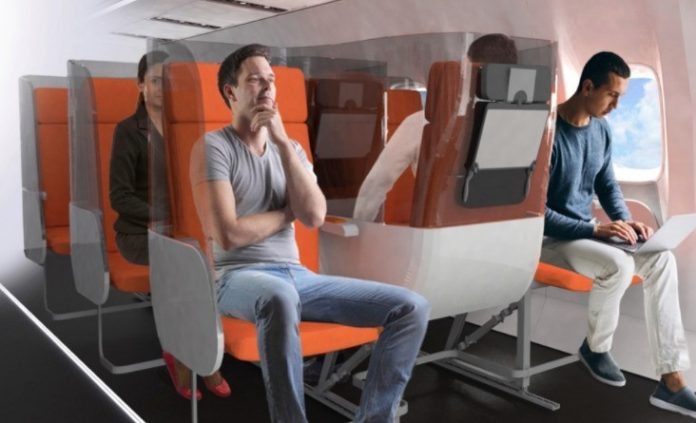A NEW plane seat design could be the future of travel post-coronavirus.
The new designs would see hygiene screens fitted in each seat, as well as new middle seats which would face backwards while flying.

New plane seats could have plastic hoods post-coronavirus
The revolutionary sitting arrangement was revealed by Aviointeriors, the same company who created stand up seats for aircaft cabins.
In economy class, each seat would have a plastic screen around the head and side, preventing contact with the passenger next to them.
The screen, called Glassafe, is transparent to allow communication but will prevent the spread of any viruses between travellers.
It can also be fitted onto existing economy seats, and leaves the lower part of the seat free for passengers to continue using the in-flight entertainment or to eat their meals.
The design firm explained: “Glassafe [creates] an isolated volume around the passenger in order to avoid or minimise contacts and interactions via air between passenger and passenger, so as to reduce the probability of contamination by viruses or other.”
While Aviointeriors claim it is ready to be produced, it is unlikely to be manufactured anytime soon, with it needing to pass safety regulations first.
Passengers could also see changes to their seat positions post-coronavirus.
Not only would plastic screens be in place similar to Glassafe in economy, but some of the seats could face backwards instead.
The S-shape design would mean the middle seat passenger faces the back of the plane instead.
It has been dubbed the Janus seat, named after the two-faced Roman God.
The suggestion of a staggered seating arrangement has been suggested before , but to allow the passenger in the middle more room as opposed to avoiding catching any viruses.
But with the middle passenger facing backwards, they would also still be facing the two passengers in the row behind, meaning contamination.
There is also no scientific evidence proving the screens work – some studies also suggest that the virus can live on plastic for up to three days, so the cabins would still need to be thoroughly cleaned between flights.
Currently, airlines are considering keeping the middle seat empty while capacity is low to ensure social distancing.










